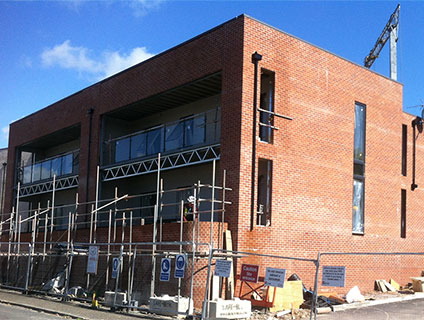When starting a new building project, one of the most important decisions you’ll face is choosing the right frame system. Both timber and steel frames offer distinct advantages, making them popular choices in the UK construction industry. In this blog, we’ll explore the key differences between timber and steel frame systems to help you determine which one is best suited for your project’s needs.
1. Strength and Durability
Timber: While timber is strong, it is susceptible to moisture damage, pests, and warping over time if not properly maintained. It also has limitations when it comes to structural strength in larger builds.
Steel: Steel frames, like those offered by U-Roof, provide superior strength and durability. They are resistant to rot, pests, and extreme weather conditions, ensuring the structure remains solid for decades.
Verdict: If long-term durability and structural strength are priorities, steel frames have a clear advantage over timber.

2. Sustainability and Environmental Impact
Timber: Timber is often seen as more eco-friendly since it is a renewable resource and can sequester carbon during its growth cycle. However, sourcing sustainable timber is essential to avoid deforestation concerns.
Steel: While steel production involves energy-intensive processes, it is 100% recyclable and can be repurposed indefinitely without losing strength. Light gauge steel frames also contribute to eco-friendly building practices by reducing material waste.
Verdict: Both materials have their environmental benefits, but sustainable practices are key for both timber and steel to have minimal impact on the environment.
3. Build Time and Ease of Construction
Timber: Timber frames are relatively easy to work with and can be installed using traditional building methods. However, site conditions such as moisture can cause delays.
Steel: Steel frames are pre-engineered and delivered to the site ready to assemble, which speeds up the building process. Systems like U-Roof’s light gauge steel frames reduce build times significantly, making them ideal for projects on tight schedules.
Verdict: Steel frames generally provide faster construction times and greater efficiency, especially with pre-engineered systems.
4. Cost Considerations
Timber: Timber frames tend to have a lower upfront cost compared to steel. However, long-term maintenance and potential repairs can increase the overall cost.
Steel: Steel frames have a higher initial investment but require less maintenance over time. Their durability also translates to fewer repairs, offering better value in the long run.
Verdict: Steel may require more initial investment, but it offers better long-term savings due to reduced maintenance costs.

Not sure which frame system is right for you? Here are five things to consider when making your decision.
5 Key Factors to Consider When Choosing Between Steel and Timber
- Project Size and Complexity: Steel is ideal for larger, more complex builds, while timber works well for smaller, traditional projects.
- Climate and Site Conditions: Steel is better suited for areas prone to moisture or pests, reducing the risk of damage.
- Design Flexibility: Both materials offer flexibility, but steel frames are more suitable for modern, intricate designs.
- Maintenance Requirements: Timber requires regular upkeep, whereas steel is virtually maintenance-free.
- Budget: Consider both upfront and long-term costs. Steel offers better durability, but timber may suit tighter budgets initially.
Choosing between steel and timber frame systems depends on your project’s needs, budget, and long-term goals. Timber is a good fit for smaller, traditional projects, but steel provides unmatched strength, durability, and efficiency for more complex builds. With U-Roof’s light steel frames, you get a high-quality, pre-engineered system that ensures quick construction and long-lasting results.
Learn more about U-Roof’s steel frame systems to see if they’re the right fit for your next project.
